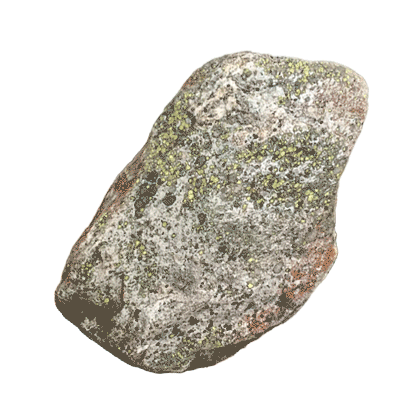LICHEN CLOCK - 2023
Materials: Bronze, Natural Alpine Boulders, Stainless Steel
Dimensions: 70 x 380 x 60 cm

.jpg)
Lichen Clock is a sculpture commissioned for the commune of Martigny, Switzerland. The sculpture celebrates Lichen as a bio-kairological clock, to be stewarded over many generations, where it’s growth would be perceptible over different lifetimes. Here, time is understood not through solar time, but biological and environmental time. It acts as a bio marker for environmental conditions to give us tacit insight into air and water quality and hopefully encouraging us to reflect on how to be more socially and ecologically aware. This proposal encourages us to see ourselves as symbiotic with the Lichen, where our collective actions can serve to create a better environment not only for it but also the whole community.
The study of Lichen has a deep history in this area of the alps, particularly Rhizocarpon geographicum or ‘map lichen’ which is abundant on these rocks. It has been used to understand geological dating by many researchers. This work was assisted by Dr Gothamie Weerakoon, curator of the Lichen Collections and Dr Christine Strullu-Derrien, department of Earth Sciences at the Natural History Museum in London, as well as Dr Nicolas Kramar from the Nature Museum in Sion.
The piece alludes to traditional town clocks. The column structure that holds the rocks is based on what some researchers believe to be the ancient ancestor of modern Lichen, called Prototaxites, a type of fungi that existed 450 million years ago, creating a trans-temporal link between the two. This was ‘digitally grown’ through environmental simulation and then created in bronze, using weather data collected over the years from Martigny.
Computational Simulations of Prototaxites raising the Lichen colonised boulders. This part of the work was supported by Duncan Carter using live weather data from Martigny and research by Dr Cristine Strullu-Derriene
This sculpture involved collecting research on Prototaxites from both the Natural History Museum in London as well as the Hunterian Museum in Glasgow, who hold the largest collection of specimens of the organism in the UK. I worked with Professor Neil Clark at the Hunterian to collect images of the micro-structure of Prototaxites fossils in order to develop the principles for the computational simulation of the piece.
Further work was done in Switzerland, where Gothamie surveyed the local lichen assemblages in the region of Martigny. Sites were selected based on the geographical expertise of Dr Nicolas Kramar.
Dr Gothamie Weerakoon conducting a transect survey of Lichen assemblages in Vale de Bagnes, Valais, Switzerland.

The boulders were extracted from Vale de Bagnes, Switzerland, after which they were transported back to Martigny to be 3D scanned. A completely accurate digital representation of the extracted boulders was essential in order to run the digital simulation of the growing tower structure, based on Prototaxites.
This element of the work was assisted by TMR, Martigny. With special thanks to Caroline Tapernoux for your generosity and support in this challenging aspect of the project.
A selection of images of alpine Lichen found through various surveys of the local ecology as well as images of the boulder extraction.


Fabrication of the bronze component was done at Salvadori Arte SRL, based in Pistoia, Italy. Digital version of the Prototaxites tower was 3D printed in sections and then directly transferred to mould. The Lichen colonised rocks were then moved from Martigny to Pistoia to be mounted onto the piece. The patination of the work was informed by the micro-structures found in the fossilised slides at the Hunterian museum. The majority of the patination had to be done cold so as not to damage the Lichen living on the piece.
With special thanks to Dr Gothamie Weerakoon, Dr Nicolas Kramar, Dr Cristine Strullu-Derriene, Aurelié Fontan, Annemette Juel-Sebbelin, Dr Neil Clark, Caroline Tapernoux, Stephané Jordan, Giaccomo Salvadori, Frédéric Giroud and the Communes of Martigny and Vale de Bagnes for your help and support on this work.

























































